In the chapter on
The French Connection (D'Eu), the wife of William de Héimois, Lesceline de Harcourt, was mentioned as an individual with a considerable background of European nobility. Below are family lineages from some notable ancestors to her and some historical background .
I. Frankish ancestors of Lesceline de Harcourt
Towards the end of the 5th century, the Roman Empire in the west was dying. It was being bombarded on all sides by a series of barbaric attacks from the Huns (Caspian Sea), Visigoths (Spain), and Ostrogoths (Danube). In 476, the western empire finally fell. With the demise of Rome, many of the barbaric tribal kings carved out a portion of the old empire for themselves.
One of these tribes were the Franks, germanic Celts who populated the middle and lower Rhine. They moved into what is now France and defeated the Celtic Gauls to become the dominate power. One of these subgroups were called the Salian Franks who lived at the mouth of the Rhine River in what is now Belgium and the Netherlands (Figure 1).
The Salian Franks rose to dominance among the Franks, expanding their boundaries. From 460 AD to 482 AD, they conquered Frankish tribes surrounding them. By 496, they had overrun part of Swabia and defeated the last remaining remnants of the Roman Empire in northern Gaul.
These Salian Franks began calling that region Neustria (the New Land) as opposed to Austrasia (the Eastern Land), which was their core territory. In the next two centuries, they had expanded their territory to include almost all of modern France, Belgium, the Netherlands, most of Germany, all of Switzerland, western Austria, western Slovenia, northern Italy, and even a sliver of Spain.
The exact boundaries of both
Austrasia
| Austrasia can be taken to correspond roughly to the territory of present-day Luxembourg, parts of eastern Belgium, north-eastern France (Lorraine and Champagne-Ardenne), west-central Germany (the Rhineland, Hesse and Franconia) and the southern Netherlands (Limburg, North Brabant, with a salient north of the Rhine including Utrecht and parts of Gelderland). |
| Nuestria is fully within the boundaries of modern France, predominantly the provinces of Normandy with the exception of Brittany (the peninsula between the Bay of Bisquay and the English Channel) as well as all of Île de France, northern Pays de la Loire, and northern Centre val de Loire. |
were somewhat fluid over the history of the Frankish sub-kingdoms."
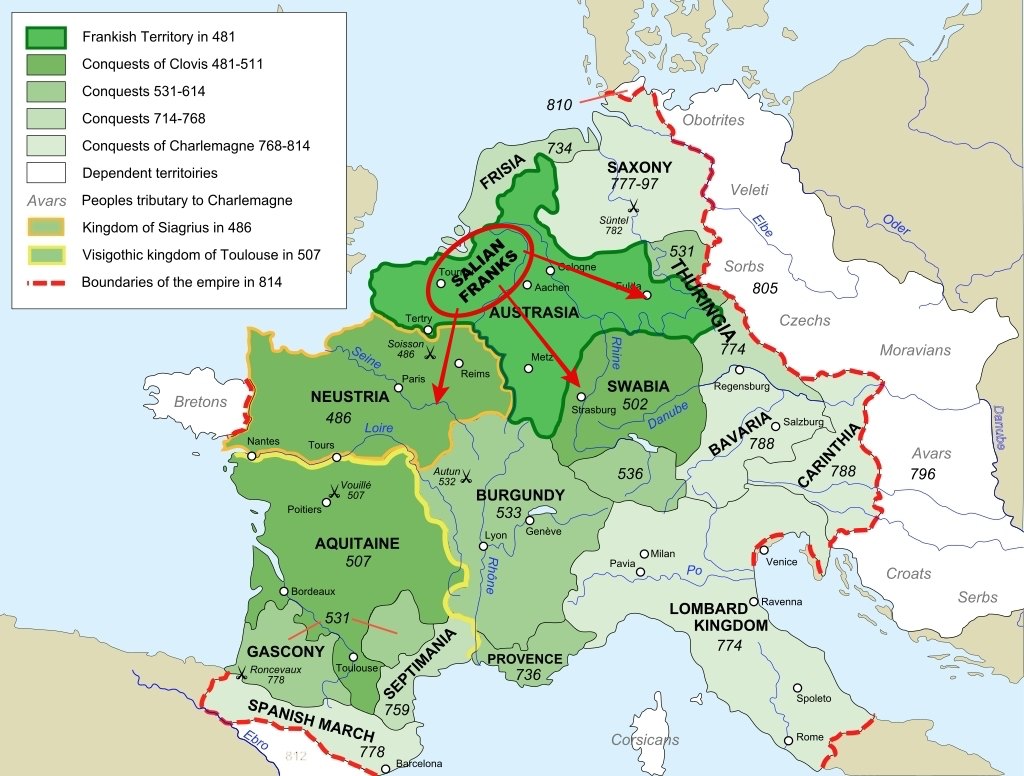
 Figure 1—Expansion of the Salian Franks, 481-814 AD [1]
Figure 1—Expansion of the Salian Franks, 481-814 AD [1]
From out of these Salian Franks rose the Merovingian Dynasty, named for King Merovech who ruled from 447 to 458. The Merovingians were later replaced by a new dynasty called the Carolingians in the 8th century, the most famous being Charles Martel and his grandson Charles I (Charlemagne). However, it was all made possible by a Merovingian that united all the Frankish petty kingdoms and conquered most of Roman Gaul to be put under his rule, Clovis I, my 50th great-grandfather.
A. Frankish Merovingian ancestors of Lesceline de Harcourt
1Clovis I "The Great," King of the Franks
♂︎ [466–511]
▼
Clovis was the King of the Franks—he founded the Merovingian dynasty, which ruled the Frankish kingdom for the next two centuries. He established the capital at Paris and defeated the Visigoths under King Alaric II at Battle of Vouille in 507. He is considered "the first king of what would become France."— the first to unite all of the Frankish tribes under one ruler, changing the form of leadership from a group of royal chieftains to rule by a single king.
He converted to Christianity and was baptized on Christmas Day in 508, which led to widespread conversion among the Frankish peoples and religious unification across what is now modern-day France, Belgium and Germany. Three centuries later the effect could be felt with Charlemagne's alliance with the Bishop of Rome and the consequent birth of the early Holy Roman Empire.
His name is Germanic, composed of the elements hlod ("fame") and wig ("combat"). It is the origin of the name Louis, borne by 18 kings of France. In modern German the name became Ludwig; in Spanish, Luis; in Italian, Luigi; and in English, Lewis.
2Chlothar I "The Old," King of the Franks{/u}
♂︎ [497–561]
▼
On the death of his father in 511, Chlothar received a healthy inheritance of lands in Soissons (Nuestria, which later became Normandy). His reign was peppered with ambition and violence.
He sought to extend his domain, so took part in various expeditions against Burgundy and eventually conquered that kingdom. He marched against the Thuringii and against the Visigoths of Spain. He also ruled over the greater part of Germany, made expeditions into Saxony, and for some time exacted from the Saxons an annual tribute.
He was the chief instigator of the murder of his brother Chlodomer's children and his share of the spoils consisted of the cities of Tours and Poitiers. On the death of his great-nephew Theodebald in 555, Chlothar annexed his territories. When his brother Childebert died in 558, he became sole king of the Franks.
The end of his reign was troubled by internal dissensions. His son, Chram, rose against him on several occasions. So, Chlothar followed Chram into Brittany, shut him up with his wife and children in a cottage, and set it on fire. Overwhelmed with remorse, he went to Tours to implore forgiveness at the tomb of St Martin. He died shortly afterwards.
3Chilperic I, King of Soissons
♂︎ [539-584]
▼
It seems these Frankish rulers are getting worse. Violent wars intermittently interspersed with truces, family assassinations, attempted murders, and rape were a hallmark of Chilperic's rule.
His actions make Game of Thrones seem tame. There was so much bad blood that Chilperic was called "the Nero and Herod of his time" by one author.
He had three brothers and upon their father's death in 561, he endeavored to take the entire kingdom by immediately waging war with them. Through changing alliances, he fought wars with them again in 567 and 573.
Then he decided the key was a brilliant marriage. He had already repudiated his first wife, Audovera, and had taken as his concubine a serving-woman called Fredegund. He dismissed Fredegund and married Galswintha, daughter of a Visigoth sovereign in Spain. He soon tired of her and one morning she was found strangled in her bed. A few days later he married Fredegund.
The murder was the cause of more long and bloody wars. Even one of his daughters, Basinia, exiled to a nunnery, led a rebellion of nuns that became violent. In 584, while returning from a hunting expedition, he was stabbed to death by an unknown assailant.
His name in Frankish meant "powerful supporter," similar to the German hilfe "aid" and reich "powerful."
4Chlothar II, King of the Franks
♂︎ [584–629]
▼
Chlothat II was able to unite Francia under his rule. Like his father, he built up his territories by moving in after the deaths of other kings.
He was an infant when is father died, so his mother became Regent until she died in 587, at which time he became King of Nuestria. His reign lacked the outrageous acts of murder perpetrated by many of his relations, with the notable exception of the defeat in battle and execution of Brunhilda, sister of the previously mentioned Galswintha.
Brunhilda bitterly feuded with Fredegund, third wife of Chlothar II's father, Chilperic. Fredegund was actually the one who murdered Galswintha in order to replace her as queen. The feud was continued by Chlothar II, who in 613 defeated Brunhilda in battle and had her executed by being pulled apart by four horses.
5Dagobert I, 11th Archduke d'Austrasia
♂︎ [603-639]
▼
Dagobert was the last king of the Merovingian dynasty to wield any real royal power.
In 623, Dagobert's father, Chlothar II, was forced to make Dagobert king of Austrasia by the nobility of that region, who wanted a king of their own. He was able to govern Austrasia well ad was widely admired.
Upon the death of his father in 629, Dagobert inherited the Neustrian and Burgundian kingdoms. In 632, his half brother, Charibert, who ruled the Aquitaine, was assassinated and Dagobert then had Aquitaine firmly under his rule.
He became the most powerful Merovingian king in many years and the most respected ruler in the West.
6Sigebert III, 12th Archduke d'Austrasia
♂︎ [630–656]
7Berswinde d'Austrasia
♀︎ [650-690] m. Adalrich (Etichio), Duke of Alsace
♂︎ ▼
Adalrich was an important and influential figure in the politics of late 7th-century Austrasia (Figure 2). He was father of the Etichonids from which derives the House of Habsburg, one of the most influential and distinguished royal houses of Europe.
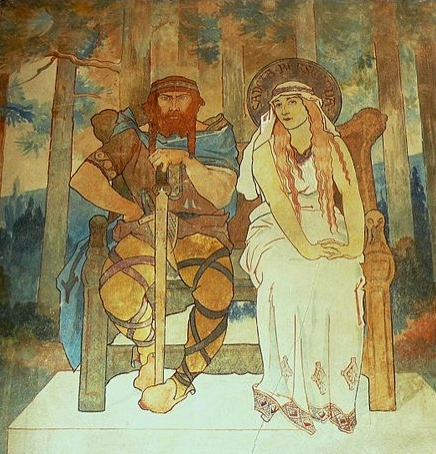
 Figure 2—Adalrich and Berswinde
Figure 2—Adalrich and BerswindeAdalbert de Alsace, Duke of Alsace
♂︎ [645-689]
9Luitfride I, Duke of Alsace
♂︎[675-760]
10Luitfride II, Count of Sundgau (Upper Alsace)
♂︎[740-802]
11Hugh II (III?)}
♂︎[765-839]
▼
This Hugh has been difficult to nail down. There may actually be two named Hugh that lived at the same time.
There is a Hugh II "The Timid" who lived about 780-837, Count of Tours. He married Ava DeMorovis of Alsace and with whom they had one son named Torquat. This doesn't quite jive with the ancestry I've been able to come up with.
Then there seems to be a Hugh II (possibly III) le Mefiant who lived about 765-836, also sometimes listed as Count of Tours but also of Burgundy—not to be confused with Hugh II Duke of Burgundy who lived 1084-1143—and also of Upper Alsace. He was supposedly married to Bava of Tours, which might be where him being the Count of Tours comes from. Could Bava=Ava?
One ancestry source I discovered lists a son Hugh, which fit with out ancestry, but then goes on to say that his full name is Hugh Torquat ... and we're right back to Hugh "The Timid." To compound the confusion, le Mefient means "distrustful" which is close to "timid" but not exact, at least not an exact enough of a translation to be conclusive.
It seems to fit that the Hugh le Mefient that's part of our family tree is from Alsace, because that's where his father, grandfather, and great-grandfather were Counts and Dukes. It makes more sense he would marry Ava from Alsace and the other Hugh "The Timid" would marry Bava from Tours, but the one thing I've discovered in genealogical research is never to make assumptions, no matter how logical they seem.
The reason I've felt compelled to work this out is that Hugh "The Timid" had rather unsavory circumstances fall to him. In 827, he and Matfrid of Orléans were commissioned by King Louis "The Pius" to recruit an army and repel the invasion of the Moslem general Abu Marwan. Hugh and Matfrid delayed until the threat had passed. For this he was nicknamed "The Timid" and both he and Matfrid found themselves greatly disfavored at court. They were deposed the next year.
Then he joined Matfrid in inciting his father-in-law King Lothair to rebellion and when that failed, had all of his lands in Gaul confiscated. He remained influential in Italy, where Lothair made him Duke of Locate, but he died during an epidemic in 837. News of his death distressed Louis "The Pious," but the opponents of Lothair interpreted it as divine judgement.
I'd love to say I've resolved this so I can either include these unique events in our family history—or exclude them depending on one's perspective—but I have not. For now, I'll just have to list Hugh le Mefient as our ancestor and leave it go at that.
12Hugh, Count de Bourges
♂︎[797-853]
▼
Hugh had a sister named Ementrude, who married Lothar I, Earl of Germany and Holy Roman Emperor.
13Etienne (Stephen), Count de Bourges
♂︎[830-864]
14Hugh II de Bourges
♂︎[862-892]
15Richilde du Maine
♀︎[886-946] m. Thibault de Blois
♂︎
16Gerlotte de Blois
♀︎ [910-957] m. Hrolf "Rollo" Turstain de Heidmark
♂︎
17Anslech Hrolfson de Bricquebec
♂︎ [927-994]
18Eremberge de Bricquebec
♀︎ [945-992] m. Torf "The Rich" de Harcourt
♂︎
19Turquetil de Harcourt
♂︎ [980-1036]
20Lesceline de Harcourt
♀︎ [1003-1069]
☜ Line converges on Lesceline #1
B. Frankish Carolingian Ancestors of Lesceline de Harcourt
While the Mergovinians were kings, they began to relinquish a lot of their power to what were called Mayors of the Palace, populated by members of the Arnulfing/Pippinid Dynasty. This dynasty is usually considered to have been founded by Saint Arnulfing (Arnulf) and Pepin I (Pippinid) in the early seventh century, both of whom lived at the same time and wielded a great deal of power and influence in the Merovingian kingdoms (Figure 3).
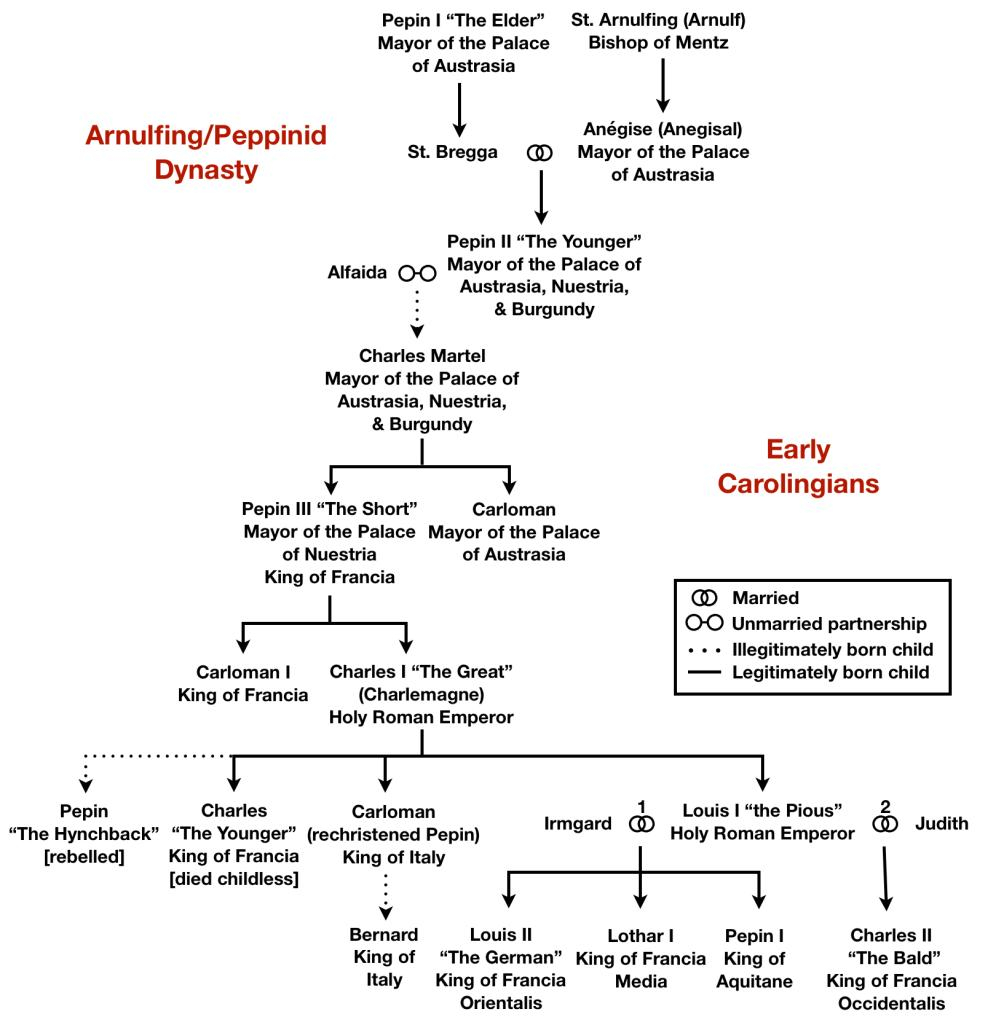
 Figure 3—The Arnufling/Pippin Dynasty and Early Carolingians. [2]
Figure 3—The Arnufling/Pippin Dynasty and Early Carolingians. [2]
The two houses were united by the marriage of St. Arnulf's son, Ansegisel, to Pepin I's daughter, Saint Begga. After the rule of the Mergovinian Dagobert I, the Arnulfing/Pippinid Dynasty came to full power, though to a fractured Frankia. As a result, wars broke out which continued for several generations. That process helped bring about the rise of the
Carolingians
| The Dynasty takes its name from Carolus, the Latinized name of Charles Martel, de facto ruler of Francia from 718 until his death. The name "Carolingian" comes from the Medieval Latin karolingi, meaning "descendant of Charles" or "the family of Charles. |
from out of the Arnulfing/Peppinid Dynasty culminating in Charlemagne uniting France.
The Arnufling/Peppinid Dynasty and early Caroliginians were all ancestors of Lesceline de Harcourt. She was descend from two separate branches, each having their roots beginning in Peppin II.
1Peppin II (Pepin of Herstal), Duke and Prince of the Franks
♂︎ [635-714]
▼
Pepin's statesmanship was notable for the further dwindling of Merovingian royal authority, and for the acceptance of the undisputed right to rule for his family. He became Mayor of the Palace in Austrasia in 680. He subsequently embarked on several wars to expand his power. He united all the Frankish realms by the conquests of Neustria and Burgundy in 687. In foreign conflicts, Pepin increased the power of the Franks.
2Charles Martel, King of the Franks
♂︎ [688–741]
▼
Martel was a Frankish statesman and military leader who, as Duke and Prince of the Franks and Mayor of the Palace, was the de facto ruler of Francia from 718 until his death.
He restored centralized government in Francia and began a series of military campaigns that re-established the Franks as the undisputed masters of all Gaul. Perhaps his most well known battle was his success in defeating an Arab raid in Aquitaine at the Battle of Tours
3Pepin III "The Short," King of the Franks
♂︎ [714–768]
▼
His rule, while not as great as either his father's or son's, was of great benefit to the Franks as a people. He maintained his father's policy of containing the Moors, driving them over the Pyrenees. He continued his father's expansion of the Frankish church into Germany and Scandinavia as well as developing the feudal infrastructure that would prove the backbone of medieval Europe. He consolidated his power further by integrating Aquitaine into the kingdom and was preparing for one final war against the Saxons when his health began to fail.
4Charles I "the Great" (Charlemagne), Holy Roman Emperor
♂︎ [742-814]
▼
Charlemagne has been called the "Father of Europe" because he united most of Western Europe for the first time since the fall of the Roman Empire three centuries earlier. In addition, he united parts of Europe that had never been under Frankish or Roman rule. He became King of the Franks from 768, King of the Lombards from 774, and Holy Roman Emperor from 800.
His rule was a period of energetic cultural and intellectual activity within the Western Church. All Holy Roman Emperors considered their kingdoms to be descendants of Charlemagne's empire, as did the French and German monarchies. However, the Eastern Orthodox Church views Charlemagne more controversially, which led to the eventual split of Rome and Constantinople in the Great Schism of 1054.
Charlemagne died in 814, having ruled as emperor for almost 14 years and as king for almost 46 years. He married at least four times and had four legitimate sons and one illegitimate one. He was survived by only one son.
The oldest, Pepin "the Hunchback," was illegitimate, revolted against his father, and ended up in a monastery. Charles "the Younger" was legitimate, became King of the Franks, but died childless. Carolman, rechristened Pepin, was legitimate and became King of Italy, but died before his father. He was followed by Louis the Pious, who was legitimate and the only son to survive and succeed his father. Finally Lothair was a twin of Louis but died in infancy.
We can trace our family ancestry back from Lesceline de Harcourt through both Carolman and Louis, both of whom would be our 39th grandfathers.
(1) Frankish Carolingian Ancestors from Louis "The Pious"
5Emperor Louis "The Pious," Holy Roman Emperor
♂︎ [778–840]
▼
Louis was the King of the Franks and co-emperor of the Holy Roman Empire with his father beginning in 813. As the only surviving adult son of Charlemagne, he became the sole ruler of the Franks after his father's death in 814. He is generally compared unfavorably to his father, though the problems he faced were different.
The first decade of his reign was characterized by several tragedies and embarrassments, notably the brutal treatment of his nephew Bernard of Italy, son of his brother Carloman (Pepin) and our ancestor as well (see below). His reign ended, however, on a high note, with order largely restored to his empire.
Louis atoned in a public act of self-debasement for his treatment of Bernard. Unfortunately, it was most likely seen as a sign of weakness and the impetus for border wars and civil wars among his sons that had previously been held in check by the awe of his position.
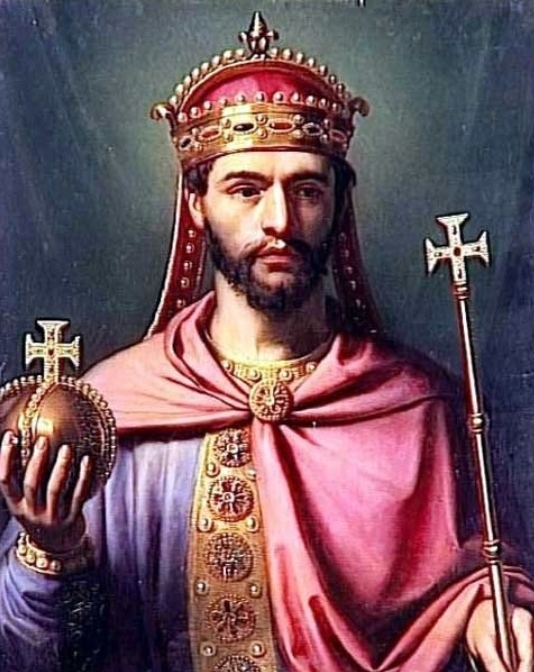
 Figure 4—Louis I "The Pious," King of Francia and Holy Roman Emperor.
Figure 4—Louis I "The Pious," King of Francia and Holy Roman Emperor.
Unfortuantely, the reign of Louis "The Pious" was followed by three years of civil war. After his death in 840, his sons by different mothers began outright war against each other. For years, there had been many squabbles and reconciliations between Charles II "The Bald" and his two older step-bothers, Lothar II (who held the imperial title of Holy Roman Emperor after their father Pepin died) and Louis the German, King of Bavaria.
After several battles, the brothers reached an agreement in the Treaty of Verdun of 843 in which the Carolingian empire was divided into three kingdoms (Figure 5). The treaty was the first stage in the dissolution of the Charlemagne empire and initiated the the modern countries of western Europe.
Lothair retained the imperial title and the Kingdom of Italy along with central regions from Flanders through the Rhineland and Burgundy as King of Francia Media. Louis received the eastern part of the Carolingian Empire, known then as East Francia and later as Germany.
Our ancestor, Charles II "The Bald," received the kingdom of the West Franks as King of Francia Orientalis, which he had been already been governing. It corresponded with much of modern France.
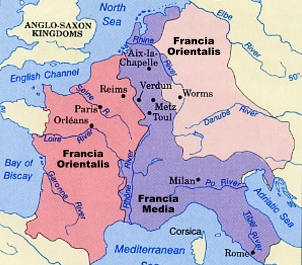
 Figure 5—The Frankish Kingdom after the Treaty of Verdun.
Figure 5—The Frankish Kingdom after the Treaty of Verdun.Charles II "The Bald," Holy Roman Emperor
♂︎ [843–877]
▼
Charles was unpopular and and forced to contend with disputes with his brothers, rebellions in the Aquitaine and Brittany, and invasions from Vikings which devastated the lands to the north.
The Vikings successfully sieged and sacked Paris in 845 and several times had to pay heavily for them to remove their sieges. Later, he was able to fortify bridges on all rivers to block the Viking incursions. Two of these bridges at Paris saved the city during another siege of 885–886.
He was was also able to make his mark on the military. He made the army more mobile by providing for a cavalry element, the predecessor of the French chivalry so famous during the next 600 years.
He was probably not bald—depictions of him show he has hair. Two possible explanations have been forwarded: that it was used ironically because he was very hairy, or that it was a tongue-in-cheek reference to the fact that he had been "landless" for so many years.
7Rothilde Carolingian
♀︎ [871-929] m. Hughes II de Bourges
♂︎ ▼
Rothilde was the daughter of Charles II and his second wife, Richildis de Provence.
8Richilde du Maine
♀︎ [886-946] m. Thibault de Blois
♂︎
9Gerlotte de Blois
♀︎ [910-957] m. Hrolf "Rollo" Turstain de Heidmark
♂︎
10Anslech Hrolfson de Bricquebec
♂︎[ [927-994]
11Eremberge de Bricquebec
♀︎ [945-992] m. Torf "The Rich" de Harcourt
♂︎
12Turquetil de Harcourt
♂︎ [980-1036]
13Lesceline de Harcourt
♀︎ [1003-1069]
☜ Line converges on Lesceline #2
(2) Frankish Carolingian Ancestors from Pepin, King of Italy
RESEARCH NOTE: There is some question about this lineage. The difficulty arises with Sprote Adela de Senlis who married Bernard "The Dane" de Harcourt. There is no question that she married Bernard and that she was married three other times, once to William I "Long Sword," the son of Rollo. The problem is that her parentage is in question. It's generally considered that Hubert I was her father, but if so, this leads to an interesting dilemma because he allegedly died in September of 907. If he was her father then she would have had to been born prior to 911, which all genealogies I've seen don't question. Regardless, I'll leave this line of ancestry up just for good measure in case its the dates and not the parentage that is incorrect.
5Carloman (
Pepin
| There were several in his family named Pepin. He should not to be confused with his older half-brother Pepin "The Hunchback," or his grandfather Pepin "the Short." My guess is that Pepin "The Hunchback' disgraced the name and so it was bestowed later on Carloman. |
), King of Italy
♂︎ [773–810]
▼
He was born Carloman, but when he was a young child he was rechristened with the royal name Pepin. He was made King of Italy after his father's conquest of the Lombards in 781 where he was active as ruler of Lombardy and worked to expand the Frankish empire. He would have received a third of his father's empire, but he died in 810, four years before his famous father. His son received the the crown of Italy, but not any of Charlemagne's empire, which went to Pepin's younger brother, Louis.
6Bernard of Italy, King of the Lombards
♂︎ [797–818]
▼
Bernard was the King of the Lombards from 810 to 818. He was the illegitimate son of King Pepin of Italy (a son of Charlemagne), but nonetheless inherited the Kingship of Italy when his father died. He fell out with Louis, which resulted in him being condemned to death—he died suffering.
Cooperation between Louis and Bernard had be good until 817, when Emperor Louis the Pious drew up his Ordinatio Imperii. In it, he detailed the future of the Frankish Empire, indicating the bulk of which would go to Louis' eldest son, Lothar. Bernard received no further territory, and although his Kingship of Italy was confirmed and his position had not been altered by the terms of the decree, he balked at being a vassal to Lothar. Under some bad advice from counselors, Bernard began to plot against Louis.
Louis the Pious reacted swiftly to the plot, marching south to Chalon, taking Bernard and his associates by surprise. Bernard travelled to Chalon in an attempt to negotiate terms, but he and the ringleaders were forced to surrender to Louis, tried, and condemned to death.
Louis "mercifully" commuted their sentences to blinding. The process of blinding was carried out by means of pressing a red-hot stiletto to the eyeballs. It proved so traumatic that Bernard died in agony two days after the procedure was carried out.
Afterward, his Kingdom of Italy was reabsorbed into the Frankish empire, and soon after bestowed upon Lothar. In 822, Louis made a display of public penance where he confessed before all the court to having sinfully slain his nephew.
7Pepin II Quentin, Lord of Péronne
♂︎ [817–850]
▼
He was Lord of Senlis, Peronne, and St. Quentin; as well as a Lay Abbot. Some records indicate he was connected to the influential House of Vermandois, but that is incorrect. The family connection with Vermandois only starts with his son Héribert in 896.
He was living in Italy until 834 when he went to France to the court of Louis the Pious. In 840 he was a count in the Paris area, perhaps when he was among those men faithful to the emperor Lothar who tried to stop Charles the Bald crossing the Seine.
8Pepin III Bérengere, Count of Bayeux and Rennes
♂︎ [846-893]
▼
The brothers of Pepin III were Héribert I, Count of Vermandois and Bernard II, Count of Laon.
9Hubert I de Senlis, Count Vermandois
♂︎ [850-907]
▼
Herbert controlled both St. Quentin and Péronne and died at the hands of an assassin.His activities in the upper Somme river valley, such as the capture and murder (rather than ransom) of his brother Raoul in 896, may have caused Baldwin II to have him assassinated in 907.
10Sprote Adela de Senlis
♀︎ [911-940] m. Bernard "The Dane" de Harcourt
♂︎ ▼
Sprote Adela was supposedly married four times. There is some doubt if she married William I "Long Sword" but those genealogies that say she did show Richard I "the Fearless" as their son. Secondly she married Bernard "the Dane" de Harcourt. If so, then Lesceline de Harcourt would have married her grandmother's stepson. Unusual and a little objectionable, but I'd guess not a rarity in those times.
11Torf "The Rich" de Harcourt
♂︎ [950-?]
▼
Torf de Harcourt was a somewhat legendary Norman baron, possessing numerous lordships in Normandy.
12Turquetil de Harcourt
♂︎ [980-1036]
13Lesceline de Harcourt
♀︎ [1003-1069]
☜ Line converges on Lesceline #3
II. Saxon Ancestors of Lesceline de Harcourt
The Saxons were a germanic people originally located in what is now primarily Bremen at the mouth and west of the Elbe River, stretching south along the Weser River to the region of the Ruhr River northeast of Cologne—between the Denmark Peninsula and the Netherlands.
In the 3rd and 4th centuries, the Saxons were active in raiding expeditions along the coasts of the North Sea and the southeastern coast of Britain. As the Roman occupation of Britain weakened (about 450 AD), the Saxons increased their marauding attacks and also began to build settlements there, resisting efforts to drive them off. By the end of the 6th century they and their neighbors, the Angles, were firmly established, laying the foundations for the Anglo-Saxon kingdoms. Wessex, the kingdom of the West Saxons, became dominant.
After the migration to Britain, the Saxons on the Continent were identified as Old Saxons who began to push beyond their boundaries (Figure 6) . By virtue of their conquest of Thuringia along the upper Elbe River, they occupied most of northwestern Germany. The Old Saxons waged intermittent war with the Franks until the end of the 8th century at which time they were conquered by Charlemagne and absorbed into his empire, though the Duchy of Saxony retained a certain degree of autonomy.
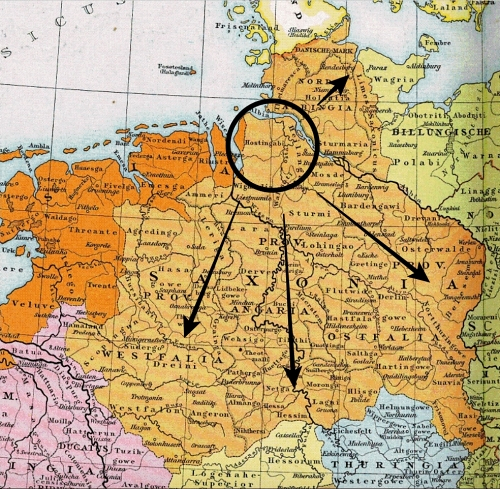
 Figure 6—Duchy of Saxony Expansion (abt. 1100 AD).
Figure 6—Duchy of Saxony Expansion (abt. 1100 AD).
By the time our ancestor, Bruno I, came to prominence, Charlemagne's empire had been divided up and Saxony was part of West Francia, ruled by King Louis III, 2nd great-grandson of Charlemagne. Bruno I was my 36th great-grandfather.
1Bruno I, Duke of Saxony
♂︎ [830-880]
▼
Bruno, also called Brun or Braun, was a member of the Ottonian dynasty. He was Duke of Saxony and commander-in-chief during the Viking invasions.
Bruno died in the Battle of Luneberg Heath, near Ebsdorf, in Saxoy—on Candlemas Day, 2 February 880. He died fighting against a Danish contingent of the Great Heathen Army that had recently been beaten back by King Alfred the Great in England. The Saxons were led by King Louis III, King of France, but they were routed in a snowstorm. Bruno died while retreating across a flooded river, probably due to his heavy armor.
Those killed were recognized by the Catholic Church as the Martyrs of Ebsdorf, whose feast day is the 2nd of February.
2Bruno II von Saxe-Egern
♂︎
3Bernard "The Dane" Harcourt
♂︎ ▼
Bernard the Dane, was the most powerful of the feudal nobles of Normandy. He was a Viking jarl (earl) and chief councilor as well as second in command to Rollo.
He had obtained the Lordships of Harcourt, Caileville, and Beauficel in recompense for his services. Under Rollo's son and successor Duke William, Bernard put down several uprisings led by Norman communities independent from the dukedom. After William's premature death by assassination, Bernard became a regent of the duchy of Normandy in December 942, along with other Norman nobles.
4Torf "The Rich" de Harcourt
♂︎
5Turchetil de Harcourt
♂︎
6Lesceline de Harcourt
♀︎ ☜ Line converges on Lesceline #4
III. Norman Ancestors of Lesceline de Harcourt
1Ragnvald Eyesteinsson
♂︎
2Hrolloaug Ragnvaldsson
♂︎
3Hrolf "Rollo" Turstain de Heidmark
♂︎
4Anslech Hrolfson de Bricquebec
♂︎[ [927-994]
5Eremberge de Bricquebec
♀︎ [945-992] m. Torf "The Rich" de Harcourt
♂︎
6Turquetil de Harcourt
♂︎ [980-1036]
7Lesceline de Harcourt
♀︎ [1003-1069]
☜ Line converges on Lesceline #5
Yes, Lesceline de Harcourt truly had royal blood—Frankish, Saxon, and Viking. That's why our DNA yields French, German, and Scandinavian
———————
FOOTNOTES
[1] Shepherd, William R. Historical Atlas, Growth of Frankish Power, 481-814. New York: Henry Holt and Company, 1911
[2] Ross, Kelley L. Successors of Rome, Francia 447-Present, Kings and Emperors of the Franks, France, Burgundy, Italy, and Germany  and the Carolingians
and the Carolingians  The Proceedings of the Friesian School, Fourth Series. 2022.
The Proceedings of the Friesian School, Fourth Series. 2022.
COPYWRITE INFORMATION
Unless otherwise noted, individual relationships were developed on ancestry.com, Threads of the Wharton Sleeve, while biographical and common knowledge comes from publicly shared information on Wikipedia that is available to everyone or nearly everyone. It is used in the broadest sense that has been accepted as valid by multiple users; therefore complies with the Creative Commons Attribution-ShareAlike 3.0 Unported License  Permission is herby granted to redistribute any and all information, verbatim or modified, providing that you also comply with the terms of the Creative Commons Deed.
Permission is herby granted to redistribute any and all information, verbatim or modified, providing that you also comply with the terms of the Creative Commons Deed.